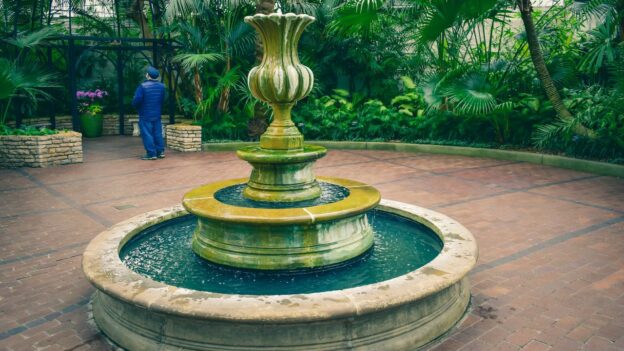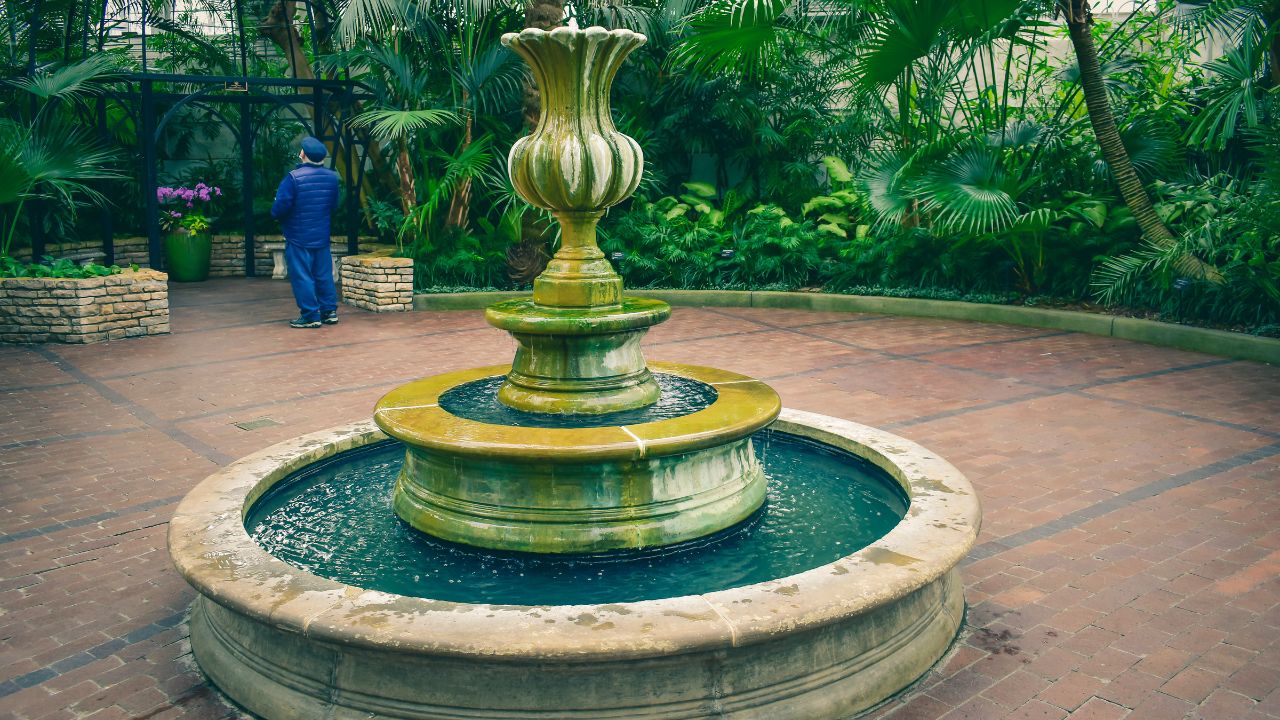Key Takeaways
- Warm weather leads to faster algae growth and more frequent algal blooms.
- Manual removal and regular cleaning are helpful but not enough alone.
- UV filters and aeration work well as safe internal treatments for long-term control.
- Chemical treatments must be used carefully, especially with pets, birds, or nearby plants.
- OC Pond Services combines external treatment, water testing, and eco-friendly solutions for reliable algae control in Orange County.
Algae may be small, but they cause big problems. Whether it’s a simple backyard water feature or a grand commercial fountain, algae growth can turn clear water into green sludge. It clogs systems, smells bad, and ruins the look of your outdoor space. And in warm, sunny places like Orange County, algae grow fast and return often.
That’s why it’s important to look at how different fountain algae treatment methods perform under these conditions. Not all treatments are made equal, especially when dealing with heat, long daylight hours, and limited rainfall. At Orange County Pond and Fountain Services, we’ve worked on hundreds of fountains across the region, so we know what works—and what doesn’t.
The Challenge of Warm Weather Algae Growth
Warmth, sunlight, and still water make a perfect recipe for algae growth. In Orange County, these conditions last most of the year. This leads to algal blooms that are hard to remove with just one cleaning. Some snow algae species even thrive in colder conditions, but in our area, it’s the warmth that drives the problem.
Algae thrive by feeding off nutrients in the water, often from leaves, bird droppings, or other debris. The warmer the water, the faster algae multiply. And since many fountains have shallow water columns and limited filtration, they become ideal for blooms, even snow algal blooms in some shaded, cooler fountains.
This makes algae prevention in warm climates a constant job. Waiting too long between regular cleaning or skipping deep cleaning can let things get out of hand fast. It’s important to treat both internal treatments (like filtration and water flow) and external treatments (like surface scrubbing and shade control).
Manual Removal: Good for Small Jobs, Not a Full Solution
Manual removal includes scrubbing, vacuuming, and brushing out mats. It works best on surface-level algae, especially when paired with natural cleaners like white vinegar or a safe fountain cleaner. These are helpful for smaller water features or early signs of algal blooms.
But by itself, this method doesn’t deal with algae deep in the water column or nutrients in the system. It’s a surface fix—helpful for fast cleanup but not long-term control. That’s why we use it alongside better filtration, water conditioning, and other tools.
UV Filtration: A Powerful Internal Treatment
UV filters are great for treating water on the inside. As water passes through a water pump, UV light damages algae cells. Over time, this helps reduce algae growth. UV treatment is a solid internal treatment that works without chemicals and doesn’t harm fish or plants like water lilies.
In places like Orange County, we use UV systems in combination with aeration and proper system design. We also suggest upgrading water pumps when needed to improve circulation and make UV systems more effective.
Chemical Treatments: Fast Results, But Use with Care
Some clients prefer fast action, and chemical treatments can deliver that. Using copper-based algaecides with Cu molecules can kill algae quickly. But we’re careful with these because too much copper or improper use can affect aquatic life, introduce hazardous bacteria, or even stain the fountain.
We use bird-safe algae control options when needed, especially in fountains near homes or parks. These products are safer for pets, birds, and nearby plants like water hyacinths. For tougher algal blooms, we sometimes recommend trusted water treatment products—but always in moderation and only when needed.
Aeration: Supporting Water Movement and Balance
Still, water is bad news for algae. Aeration mixes the water, reduces nutrient buildup, and increases oxygen. This improves the thermal responses of the system and helps balance the photosynthetic efficiency of aquatic life.
In some cases, we’ve even studied thermal performance curves in ponds with low movement, which showed more algal cell motility and faster dispersal rates. These are signs that stagnant water helps algae thrive. Aeration also disrupts microbial swimming behavior, which supports better water health.
By moving water, we limit microbial motility, reduce primary production of algae, and support plants like water hyacinth that compete with algae for nutrients.
OC Pond’s Best Practices for Long-Term Algae Prevention
We don’t just react to algae—we build long-term plans. These plans include deep cleaning, UV filters, upgraded water pumps, and safe fountain algae treatment products. We also improve internal treatment systems and provide external treatment when needed.
When dealing with recurring algal blooms, we sometimes use DNA extraction and algae testing to identify species. We’ve come across strains like Limnomonas spitsbergensis, Chloromonas reticulata, and Chlamydomonas reinhardtii—known cryophilic algae from cooler zones but surprisingly found in shaded Orange County fountains. We use data from the Culture Collection of Algae and Protozoa to guide safe action when rare strains appear.
We’ve even used video tracking, phototaxis experiments, and ciliary activity analysis in larger systems to study algae patterns and adjust treatments. Sometimes, we cool a pond using aeration and shade, or recommend a temperature-controlled incubator approach for systems affected by extreme sun.
Helping Fountains in Homes and Businesses Thrive
Our work goes beyond private yards. We help HOAs, office buildings, and even water districts manage algae safely. We’ve collaborated with groups like DWI Lakes on treatment options and advised local businesses on algae control in Orange County for years.
Even in public fountains, we follow all local rules and consider pet safety, runoff, and environmental care. From cleaning systems to applying beneficial bacteria, we take every step to protect health and beauty.
At Orange County Pond and Fountain Services, we’ve seen all types of fountain algae treatment challenges—sunny patios, shaded gardens, commercial plazas, and everything in between. We use proven science, real-world tools, and custom plans to keep fountains healthy.
If you’re facing algae growth, again and again, we’re ready to help with smart, lasting solutions. From UV systems and aeration to safe water treatment products, we’ve got your fountain covered. Let’s work together on strong algae prevention in warm climates, and keep your water clear, clean, and running smoothly.

